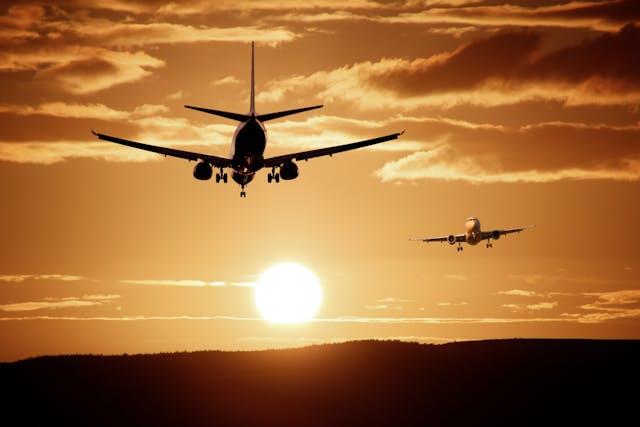The Wright brothers’ initial flight marked the beginning of a long journey that aviation has experienced. Modern skies experience unprecedented traffic density, while technological advancements will transform future air travel. The aviation sector is rapidly developing because industries worldwide pursue environmentally friendly, secure, and faster flight operations. Modern innovations and technological advancements enhance your flying experience, the environmental effects of air travel, and your everyday life. The upcoming era of aviation brings numerous thrilling developments, including electric planes and AI-powered flight management systems.
- Electric Aircraft: The Future of Sustainable Flight
Electric aircraft represent a transformative development that reshapes the entire aviation sector. The rising environmental concerns about aviation operations have led to the development of electric planes as a sustainable flight solution. Electric aircraft use electric engines, which produce fewer carbon emissions and generate less noise than conventional fuel-powered jets. Several companies are currently testing electric prototypes for short-haul flights despite their developmental stage being in its initial phase. The integration of electric propulsion systems instead of jet engines would lead to decreased fuel usage and reduced operating expenses for these aircraft. Electric aircraft development shows promise to transform regional air travel while decreasing aviation’s environmental impact over the next decade.
- Supersonic Jets: Reducing Travel Time
Supersonic jets, which can travel faster than the speed of sound, are making a comeback. The Concorde, the world’s first commercial supersonic airliner, was retired due to noise pollution and high operational costs. However, recent advancements in engineering are addressing these issues, leading to the development of new supersonic aircraft. These modern jets are being designed with quieter engines and improved fuel efficiency. The goal is to drastically cut down flight times, making long-haul travel more convenient. Imagine flying from New York to London in just a few hours instead of eight.
- Artificial Intelligence in Aviation: Enhancing Safety and Efficiency
Artificial Intelligence (AI) is increasingly being used to improve both the safety and efficiency of air travel. In aviation, AI systems can process vast amounts of data in real time, helping pilots make informed decisions during flights. For example, AI can assist pilots with navigating difficult weather conditions or predicting potential hazards. In addition, AI can streamline operations in airports and airlines, from baggage handling to flight scheduling.
Advanced aviation technologies are also revolutionizing aircraft power systems. One such innovation is the Teledyne Gill 7638-44 Sealed Aircraft Battery, a next-generation VRLA (valve-regulated lead-acid) battery designed for high-performance aviation. Known for its durability and efficiency, the 7638-44 delivers superior cranking power, reduced maintenance, and extended operational life. Its ability to perform reliably in extreme temperatures ensures aircraft systems remain powered in the most demanding conditions, contributing to overall flight safety and efficiency. The use of AI in the cockpit, combined with advanced power solutions like the 7638-44, could lead to more automated flight processes, reducing human error and improving overall aviation reliability.
- Urban Air Mobility: The Rise of Flying Cars
Urban Air Mobility (UAM) refers to the use of small, electric aircraft for short trips within cities. Often described as flying cars, these vehicles could dramatically change how you navigate urban environments. UAM aircraft are designed to take off and land vertically, similar to helicopters, and can avoid the traffic congestion that plagues many cities today. These aircraft, known as electric vertical take-off and landing (eVTOL) vehicles, could eventually serve as air taxis, offering passengers quick and convenient transportation options. Several companies are currently developing eVTOL prototypes, and some expect these vehicles to be in use within the next decade.
- Sustainable Aviation Fuel: Reducing Carbon Footprints
Sustainable aviation fuel (SAF) is another innovation that promises to make air travel more eco-friendly. SAF is produced from renewable resources, such as plant-based materials or waste products, and has the potential to reduce carbon emissions by up to 80% compared to traditional jet fuel. Airlines are already testing SAF in their fleets, and its adoption is expected to grow as more sustainable production methods are developed. SAF can be used in existing jet engines, making it a viable solution for reducing emissions in the short term. In addition to SAF, the aviation industry is also exploring hydrogen-powered aircraft, which could provide an even cleaner alternative to fossil fuels. As these technologies evolve, aviation could become a much more sustainable industry.
Conclusion
The future of flight is undoubtedly exciting. With the rapid advancements in electric aircraft, supersonic jets, AI-assisted flight systems, and sustainable aviation fuel, the aviation industry is on the verge of a major transformation. These innovations promise to make air travel faster, more efficient, and faster and to make it more sustainable for the planet.






